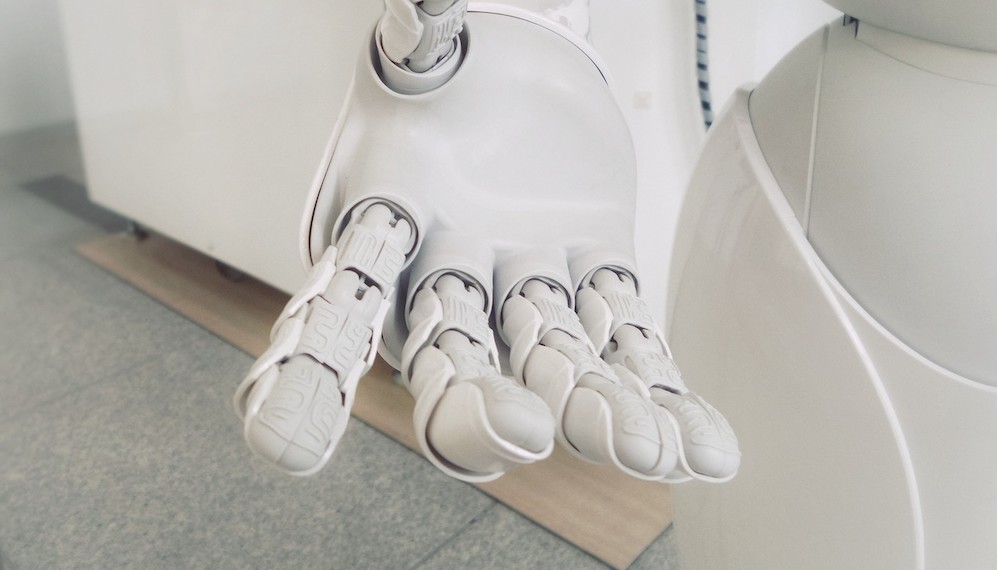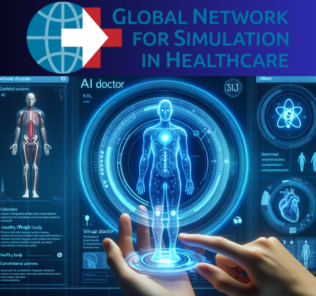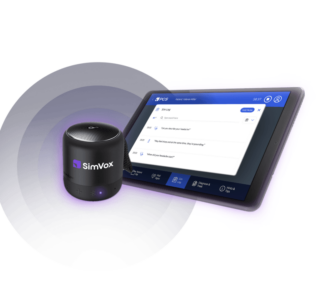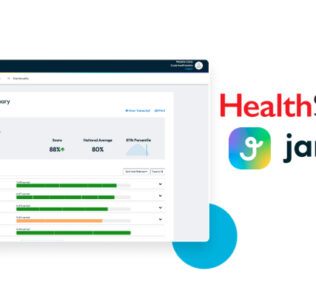How AI Might One Day Revolutionize All Clinical Simulation Training
As new healthcare simulation technologies emerge by the day, educators are starting to ask how advancements like artificial intelligence (AI) might impact clinical simulation training in the not-to-distant future. To better envision what tomorrow could look like, one must first consider what the latest contemporary theories and uses AI are before applying those opportunities to medical simulation. From supporting assessment in clinical simulation to furthering human-like interactions, AI is starting to really extend a helping hand. Most exciting of all, artificial intelligence now promises to bridge the gap between medical simulation and actual clinical practice.
The year is 2021 and the news cycle is full of headlines that reference artificial intelligence — but with such an invisible hand many of us lack the full picture of what AI can do. Somehow, AI can do everything from solving stupendous research challenges requiring massive data calculations to the deeper challenges of life, like finding Waldo. From detecting the presence of COVID-19 with simple cough sounds to writing the lyrics to the next radio jingle, AI seems to be working itself into every industry sector. Examples of AI we encounter every day include:
- A.I. in Smart Phones: When you speak to Siri, Alexa or Hey Google, an artificial intelligence system is simultaneously cross referencing everything known about you, your voice patterns, your search history, and your words to create its best guess response. Right or wrong, the AI of these mega corporations continues to collectively learn from all of us, getting smarter every single hour.
- A.I. in Customer Service: Chances are you have been on a website recently and started a “chat” with a small side window looking for help. No matter how ‘human’ these responses seem, most of them are now operating AI, similarly to the way that Siri or Alexa operate on our phones. Same idea, just focused to the company, product or service you are inquiring more about.
- A.I. in Online Shopping: Ever said a word you haven’t spoken in ages to a friend over the phone and suddenly facebook shows you an ad for that very thing? Spooky, but online shopping experiences and the advertising driving our purchase orders have been incorporating AI for years.
When considering a definition of artificial intelligence, one has to start with asking an even harder question: “What is intelligence?” While this concept may feel intuitive, current research — and even ancient philosophy — shows that the concept of intelligence is incredibly broad, covering everything from consciousness, logical thinking, capacity to reason, understanding and even emotional cognition. In simpler terms, artificial intelligence is the ability for computers to process information and make decisions in a way that reflects humans’ intelligence, which is also referred to as “natural intelligence”.
Sponsored Content:
What does this all mean for the healthcare simulationist? Since the application of AI can be so broad, this could mean a lot of things. AI is an emerging technology just beginning to show the world its full potential. There are many ideas for how AI could be used, but little understanding as to when, how and to what extent various applications will come to fruition. Some of the technology implications below exist already and are a part of everyday life. Others are years away from meaningful usefulness. However, if the history of clinical simulation has any lessons for the healthcare industry, they are that innovation has always played a large part in improving training and patient care.
Using AI For Assessment In Healthcare Simulation
A significant part of any intelligence is the ability to process large amounts of information and make meaningful conclusions. In the past, computers were able to do this with limited sets of data (think accounting spreadsheets), but they are beginning to do this with larger and larger batches of input (think being able to tell a dog breed just by looking at a picture of one).
Currently, educators watch trainees’ performance in a clinical simulation scenario to generate feedback on their behavior. Yet, as complex algorithms come to a better understanding of human speech, actions and nonverbal communication, they will be able to provide highly granular reports on learners’ decisions. Imagine being able to capture fleeting learner micro-expressions or delays in decision-making and using this level of data to further inform and strengthen debriefing.
Sponsored Content:
Using AI For Human-Like Interaction In Healthcare Simulation
Building on this foundation, one might begin to see how AI could not only be used to assess learner actions, but also to respond to them. Every medical simulationist has experienced the pain of making a manikin say something to a learner. The two classic options are clicking a button to generate a pre-recorded audio clip or using a microphone to speak through the manikin. However, as AI develops, a third option appears wherein a manikin, VR scenario or virtual patient can begin to independently communicate naturally with the learner.
While this is an exciting prospect, anyone who has used Alexa or Siri can attest to the current pitfalls of this technology. However, the field of natural language processing is rapidly developing. While speech is complex enough by itself, the field of visual/spatial data interpretation is growing as well. This visual information could be used to further support simulation-learner interactions by analyzing external behaviors and nonverbal communication and responding in situationally relevant ways.
However, one powerful example already exists in our industry with PCS.ai, or Patient Communication Simulator, such as the virtual Spark tool or physical manikin ALEX PCS. Built on the latest machine learning technologies, the PCS Engine delivers conversational AI for patient-provider interview training. The AI-driven PCS Speech Engine enables Alex to actually listen and respond on his own; thus, Alex can be used to practice healthcare communication. Using advanced cloud-based speech recognition, natural language processing and speech synthesis, ALEX gives scenario-specific answers to thousands of medical interviewing questions and countless variations.
Alex connects to the PCS.ai cloud for control from anytime, anywhere. A single login to PCS.ai manages all your PCS simulators, scenarios and simulation session recordings through an intuitive, easy-to-use web interface. Collaboratively author new patient scenarios, set up and automatically assess learning objectives, review session logs and AV recordings and enable facilitator-free simulation for your learners from PCS.ai. Clearly the future is already here!
Using AI To Bridge The Gap Of Healthcare Simulation And Clinical Practice
Clinical simulation’s impact on clinical practice with real patients has always been difficult to measure. While much research has been undertaken to this effect, collecting data outside of the controlled environment of the sim lab can be challenging. One of the reasons for this is that there are thousands of decisions one could make in either of these contexts. As streams of data become more easily collected and understood, AI can link behaviors and outcomes from clinical simulation to actual practice. As clinical simulation’s impact on outcomes is more easily visualized by all sectors of the healthcare industry, there stands to be an explosive second wave of widespread simulation implementation and integration.
Healthcare Simulation and AI: A Cautionary Note
While clinical simulation has come far, hundreds of thousands of deaths a year due to medical errors show there is still much further to go. healthcare simulation is perfectly positioned to do something about this, but every simulationist faces a difficult reality: More training is needed. Though extremely valuable, study after study shows clinical simulation is low throughput and resource-intensive. Technologies like AI stand to exponentially augment the efforts of healthcare simulation instructors worldwide and lend aid to a field desperately needing more resources.
This does not mean throwing caution to the wind when adopting innovation, especially when considering that clinical simulation seeks to impact patient-facing outcomes. An iterative approach that methodically integrates new methods or technology is recommended, pausing and evaluating outcomes at each step.
There are two temptations when approaching innovation. The first is to enthusiastically champion integration without thoughtful consideration of relevant implications. The second is to balk and offer the multitude of (perfectly sensible) reasons why something cannot be done. The challenging line to walk is the one straight in the middle. But in complex systems like healthcare and academia, that line is often the most powerful for affecting change — if kept with persistence.
Looking to the future of AI offers much promise. Though at times, finding out where that innovation fits can feel like looking for Waldo. Thankfully, AI offers a hand here as well.
Learn More About Medical Simulation
Nathan Costiuc, MSN, APRN, FNP-BC, is a Nurse Practitioner and Healthcare Simulation Educator. He began his career delivering clinical simulation to nursing students, quickly realizing the industry’s potential to impact modern training for all healthcare professionals. In navigating better ways to deliver clinical simulation, Costiuc entered into the world of virtual reality, and now works as a Clinical Education Specialist for Oxford Medical Simulation. His passion is in using innovative methods and emerging technologies to reduce medical error, solve practical problems, and improve patient care. He also actively works with disabled veterans in the clinical setting.
Sponsored Content:




















